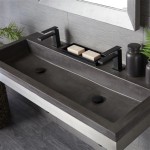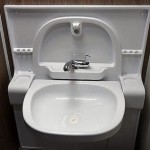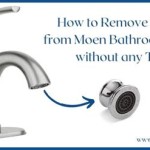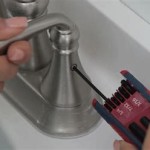How To Unclog a Bathroom Sink With Baking Soda
A clogged bathroom sink is a common household problem that can disrupt daily routines and cause frustration. Hair, soap scum, toothpaste, and other debris accumulate over time, restricting water flow and eventually leading to a complete blockage. While commercial drain cleaners are readily available, they often contain harsh chemicals that can damage pipes and pose environmental risks. A safer, more environmentally friendly, and often equally effective alternative involves the use of baking soda, a readily available household staple. This article provides a comprehensive guide on how to unclog a bathroom sink using baking soda methods, outlining various techniques for different types of clogs and levels of severity.
Understanding Why Baking Soda Works
Baking soda, scientifically known as sodium bicarbonate (NaHCO3), is a versatile compound with a slightly alkaline nature. Its cleaning and unclogging properties stem from its ability to react with acids or bases to produce carbon dioxide gas. This gas can help to loosen and dislodge the debris causing the blockage. When combined with other common household ingredients like vinegar or boiling water, the reaction is amplified, creating a more potent unclogging solution. The effectiveness of baking soda lies in its ability to break down organic matter, dissolve grease, and create pressure within the drainpipe to force out the obstruction. Unlike harsh chemical drain cleaners, baking soda is non-corrosive and less likely to damage pipes, making it a safer option for regular maintenance and minor clogs.
The mechanism by which baking soda works is multifaceted. Firstly, its abrasive texture helps to physically scrub away grime and buildup from the interior walls of the drainpipe. Secondly, the chemical reaction with an acid, such as vinegar, generates carbon dioxide, which creates bubbling and agitation within the drain. This agitation loosens the debris and helps to carry it away. Thirdly, baking soda can neutralize odors caused by decaying organic matter trapped within the drain, further contributing to a cleaner and fresher-smelling bathroom.
However, it is crucial to understand that baking soda may not be effective for all types of clogs. Severely blocked drains with significant obstructions or those caused by inorganic materials, such as small objects accidentally dropped into the drain, may require more aggressive methods, such as using a plumbing snake or calling a professional plumber. Baking soda is most effective for clogs primarily composed of organic matter and grime, making it an ideal solution for preventative maintenance and addressing minor blockages promptly.
Techniques for Unclogging a Sink with Baking Soda
Several techniques utilize baking soda to unclog a bathroom sink, each with varying degrees of effectiveness depending on the severity of the clog. The most common and widely recommended method involves a combination of baking soda and vinegar. However, other approaches using hot water or even baking soda alone can also be effective in certain situations. It is important to assess the severity of the clog and choose the appropriate technique accordingly.
Baking Soda and Vinegar Method: This is the most popular and arguably the most effective baking soda method. Start by removing any standing water from the sink using a cup or sponge. Pour approximately one cup of baking soda down the drain. Follow this immediately with one cup of white vinegar. The mixture will begin to fizz vigorously, which is the desired reaction. Let the mixture sit for at least 30 minutes, or preferably overnight, to allow the baking soda and vinegar to break down the clog. After the waiting period, flush the drain with hot water for several minutes to clear away the loosened debris. If the sink is still clogged, repeat the process.
The chemical reaction between baking soda and vinegar creates carbon dioxide gas, which expands within the drainpipe and exerts pressure on the clog. This pressure helps to dislodge the debris and force it through the drain. The acetic acid in vinegar also helps to dissolve soap scum and grease, further contributing to the unclogging process. The longer the mixture sits in the drain, the more effective it will be at breaking down the blockage. For particularly stubborn clogs, consider covering the drain opening with a stopper or tape to contain the gas and increase the pressure within the pipe.
Baking Soda and Hot Water Method: This is a simpler method that can be effective for minor clogs and preventative maintenance. Begin by pouring about one cup of baking soda down the drain. Follow this with a pot of boiling water. The hot water helps to dissolve grease and flush away loose debris, while the baking soda acts as a mild abrasive cleaner. Let the hot water sit in the drain for several minutes before running the tap to see if the clog has cleared.
The effectiveness of this method relies on the heat of the water to melt away greasy buildup and the scouring action of the baking soda. It is particularly useful for clogs caused by hair and soap scum. However, it is important to exercise caution when pouring boiling water, especially if the pipes are made of PVC, as extreme heat can potentially damage or warp them. It is generally recommended to use hot tap water rather than boiling water for PVC pipes. For metal pipes, boiling water is generally safe.
Baking Soda Alone: In some cases, simply pouring baking soda down the drain can help to freshen the drain and prevent minor clogs from forming. Pour about half a cup of baking soda down the drain and let it sit for an hour or two. Then, flush the drain with hot water. This method is less effective for existing clogs but can be a useful preventative measure to keep the drain flowing smoothly.
The baking soda acts as a mild abrasive cleaner, helping to scrub away grime and buildup from the interior of the drainpipe. It also helps to neutralize odors caused by decaying organic matter. This method is particularly suitable for bathrooms that are used frequently, as it helps to maintain a clean and fresh-smelling drain.
Additional Tips and Considerations
While baking soda is a safe and effective method for unclogging bathroom sinks, it is crucial to follow certain guidelines and consider additional factors to ensure optimal results and prevent potential problems. These include proper preparation, safety precautions, and alternative solutions for stubborn clogs.
Preparation is Key: Before attempting any unclogging method, it is important to protect the surrounding area from potential spills. Place a towel or rag under the sink to catch any drips or splashes. Also, remove any items from the sink that could be damaged by water or cleaning solutions. Ensuring adequate ventilation is also important, especially when using vinegar, as the fumes can be irritating to some individuals.
Safety Precautions: While baking soda is generally safe, it is still important to exercise caution. Avoid getting baking soda or vinegar in the eyes, as they can cause irritation. If contact occurs, flush immediately with water. It is also recommended to wear gloves to protect the skin from prolonged exposure to these substances. When using boiling water, exercise extreme care to avoid burns. Always pour boiling water slowly and steadily into the drain to prevent splashing.
Addressing Stubborn Clogs: If the baking soda methods described above fail to clear the clog, it may be necessary to explore alternative solutions. A plunger can be used to create suction and dislodge the blockage. A plumbing snake, a flexible tool designed to reach into the drainpipe and break up or retrieve obstructions, can also be effective. If all else fails, it may be necessary to call a professional plumber to diagnose and resolve the issue. A plumber has specialized tools and expertise to handle more complex clogs and prevent further damage to the plumbing system.
Preventative Maintenance: The best way to avoid clogged bathroom sinks is to implement preventative maintenance measures. Avoid pouring grease or oil down the drain, as these substances can solidify and create blockages. Use a drain strainer to catch hair and other debris before they enter the drainpipe. Regularly flush the drain with hot water to prevent buildup. Consider using baking soda as a preventative measure by pouring a small amount down the drain every few weeks, followed by hot water. These simple steps can significantly reduce the likelihood of clogs and keep the bathroom sink flowing smoothly.
In conclusion, using baking soda offers a safe, environmentally friendly, and often effective solution for unclogging bathroom sinks. By understanding how baking soda works, employing the appropriate techniques, and taking necessary precautions, homeowners can address minor clogs and maintain a healthy plumbing system. While baking soda may not be a universal solution for all types of clogs, it remains a valuable tool in the homeowner's arsenal for routine maintenance and addressing common bathroom sink drainage issues.

Unclog Drains Naturally With Baking Soda And Vinegar Mom 4 Real

Why You Should Never Use Baking Soda And Vinegar To Clean Clogged Drains Bren Did

How To Clean A Sink With Baking Soda Step By Guide

How To Make Eco Friendly Sink And Drain Cleaner Bond Cleaning In Brisbane

Unclog Drains Naturally With Baking Soda And Vinegar Mom 4 Real

How To Unclog A Drain With Baking Soda And Vinegar

Can You Really Clean The Drain With Baking Soda And Vinegar
Tiktok To Unclog Drains With Baking Soda And Vinegar Works

Unclog Your Sink Using Baking Soda And Vinegar Diy Plumbing

Woman Shows How To Unclog A Sink Using Vinegar And Baking Soda 12 Tomatoes
Related Posts







